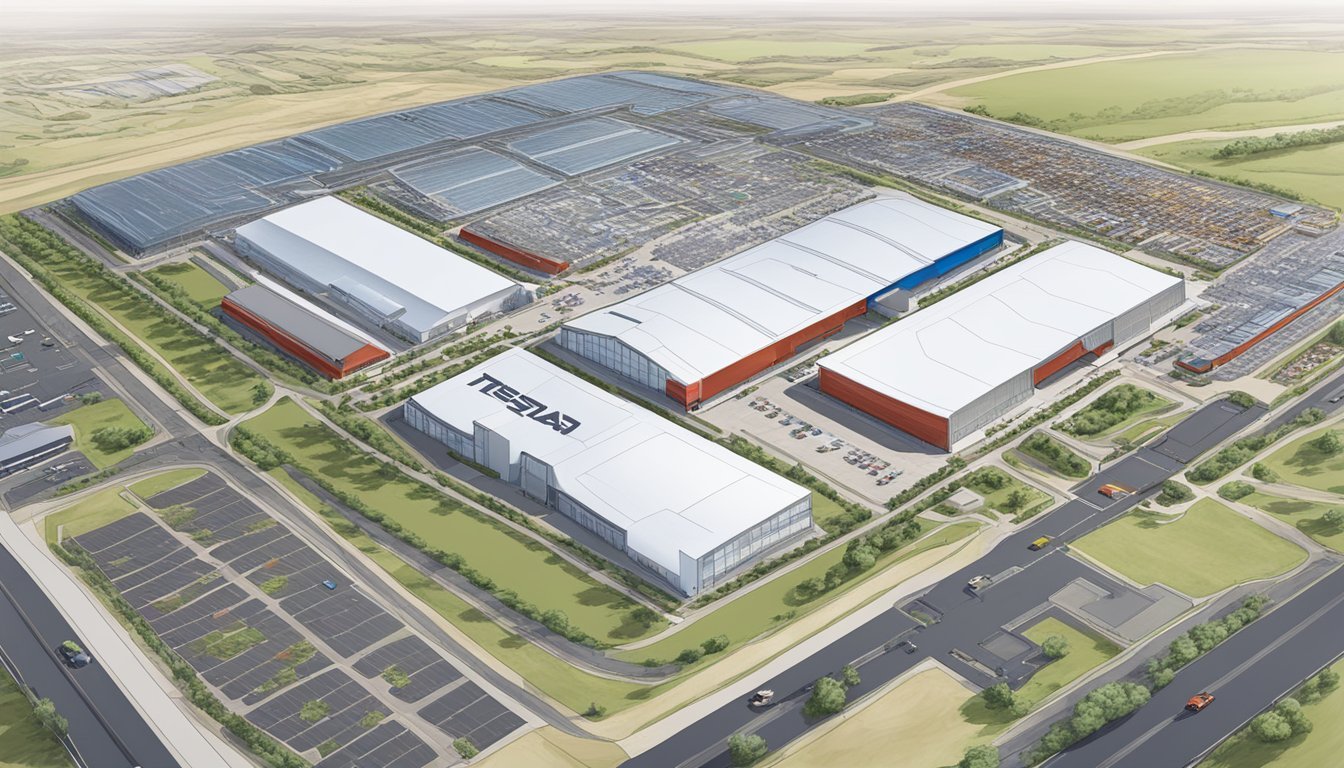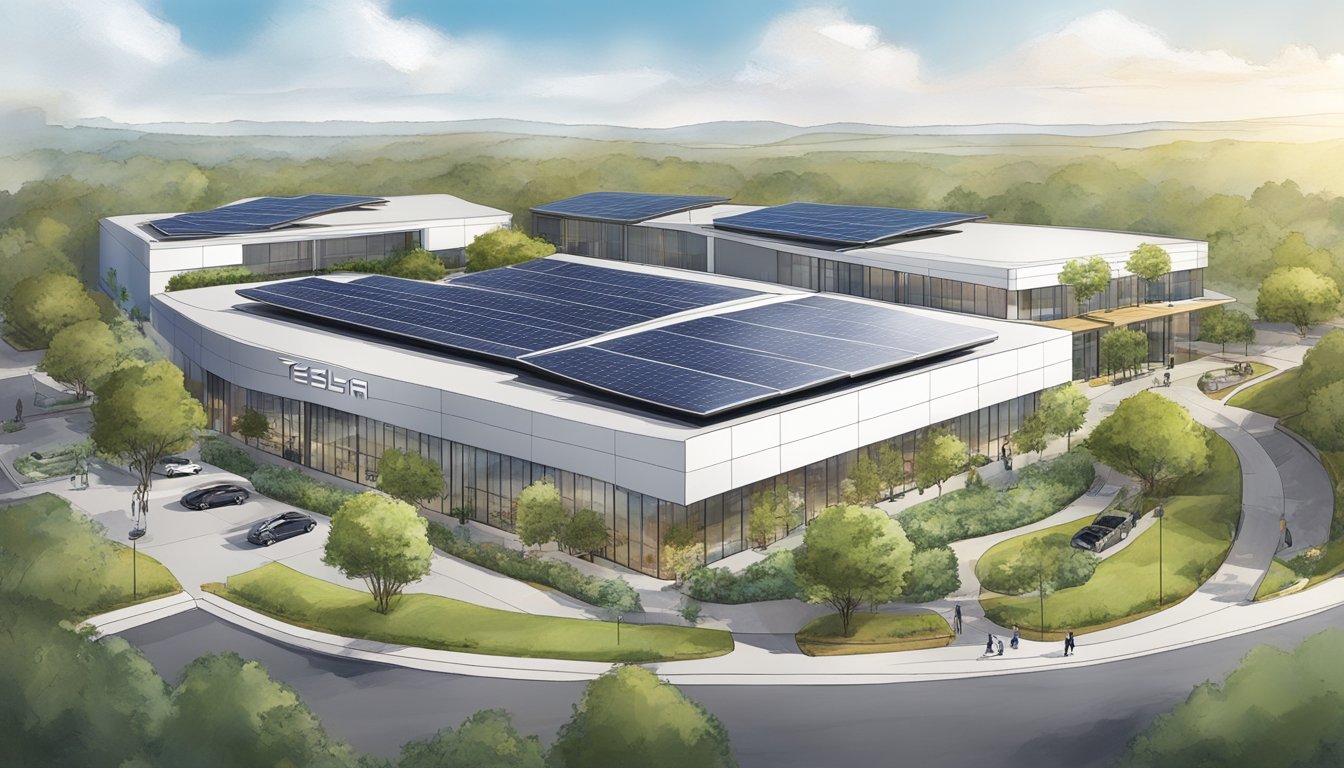Tesla HQ Austin TX: The New Heartbeat of EV Innovation!
Tesla, the innovative electric vehicle manufacturer, has made a significant move by relocating its corporate headquarters to Austin, Texas. The company officially established its new base at Gigafactory Texas on December 1, 2021. This sprawling facility, covering 2,500 acres along the Colorado River, now serves as the epicenter of Tesla's operations.
The decision to move to Austin aligns with Tesla's expansion plans and strategic vision. Gigafactory Texas is not only the company's headquarters but also a major manufacturing hub. It boasts over 10 million square feet of factory floor space, where Tesla produces its popular Model Y SUV and will manufacture the highly anticipated Cybertruck.
This relocation represents a shift from Tesla's previous Silicon Valley roots to the heart of Texas. The move brings Tesla closer to its production facilities and positions the company to take advantage of Texas' business-friendly environment. With its new headquarters, Tesla continues to solidify its position as a leader in the electric vehicle industry and demonstrates its commitment to growth and innovation.
Tesla's Corporate Evolution
Tesla's move from California to Texas marked a significant shift in the company's trajectory. This relocation reflected changing priorities and a strategic realignment for the electric vehicle manufacturer.
From Palo Alto to Austin
Tesla's roots trace back to Palo Alto, California, where it established its initial headquarters in the heart of Silicon Valley. The company thrived in the Bay Area's tech-centric environment for years. On December 1, 2021, Tesla officially relocated its corporate headquarters to Austin, Texas. The new address, 13101 Harold Green Road, sits on the expansive Gigafactory Texas site.
This move came after CEO Elon Musk's announcement during a 2021 shareholder meeting. The transition was swift, demonstrating Tesla's agility in executing major corporate decisions.
Strategic Advantages in Texas
Texas offers Tesla several benefits that California couldn't match. The state's business-friendly climate, with lower taxes and fewer regulations, appealed to the company's growth plans. Austin's thriving tech scene and available talent pool also factored into the decision.
Gigafactory Texas now serves as Tesla's global headquarters and U.S. manufacturing hub for Model Y and Cybertruck production. This consolidation of corporate offices and manufacturing facilities streamlines operations and decision-making processes.
The move to Texas also positions Tesla closer to the center of the country, potentially improving logistics for nationwide distribution. Additionally, the state's ample space allows for future expansion as the company continues to grow and innovate.
Gigafactory Texas Overview
Gigafactory Texas, also known as Giga Texas, serves as Tesla's global headquarters and primary U.S. manufacturing hub. Located just outside Austin, this massive facility plays a crucial role in Tesla's production capabilities and strategic vision.
Key Facts and Figures
Giga Texas spans an impressive area, housing Tesla's corporate offices and production lines. Construction began in July 2020, with limited Model Y production starting by late 2021. The facility now produces both Model Y vehicles and the highly anticipated Cybertruck.
Tesla has invested significantly in this project, bringing substantial economic activity to the region. The company employs over 15,000 people at Giga Texas, making it Austin's largest private employer.
The factory's strategic location enhances Tesla's manufacturing and distribution capabilities across North America.
Ecological Paradise Vision
Tesla aims to transform Giga Texas into an ecological paradise, aligning with the company's sustainability goals. The facility incorporates renewable energy sources and eco-friendly design elements.
Plans include creating green spaces and wildlife habitats around the factory. Tesla intends to open parts of the site to the public, featuring hiking and biking trails, and a boardwalk along the Colorado River.
This vision showcases Tesla's commitment to environmental stewardship while fostering community engagement. The company also invests in local education and employment programs, further integrating itself into the Central Texas community.
Construction and Development
Tesla's Gigafactory Texas, now the company's global headquarters, has undergone rapid construction and development since its inception. The massive facility near Austin showcases Tesla's commitment to innovation and sustainable manufacturing.
Construction Milestones
Ground was broken on the 2,100-acre site in July 2020. The project progressed swiftly, with structural steel erection beginning in September 2020. By April 2021, the main building's exterior was largely complete.
Drone flyovers documented the rapid progress, revealing the facility's enormous scale. The factory covers over 10 million square feet, equivalent to about 15 city blocks.
Production of Model Y vehicles began in late 2021, marking a significant milestone. The facility also houses battery cell production and Cybertruck manufacturing.
Environmental Considerations
Tesla incorporated several environmental features into the Gigafactory's design and construction. The site borders the Colorado River, prompting careful water management strategies.
Solar panels on the roof generate clean energy for factory operations. Tesla also implemented extensive stormwater management systems to protect local watersheds.
The company worked to preserve natural habitats on the property, including creating a 50-acre ecological paradise open to the public. This area features hiking and biking trails, showcasing Tesla's commitment to environmental stewardship alongside industrial development.
Economic and Government Impact
Tesla's relocation to Austin has generated substantial economic activity and employment opportunities in Central Texas. The company's presence has fostered collaboration with local government entities and stimulated regional growth.
Job Creation
Tesla's Gigafactory in Austin has become a major employer in the area. The facility has created over 15,000 jobs, significantly boosting local employment. These positions range from manufacturing roles to technician jobs and other support functions. The influx of workers has had ripple effects across the region's economy, stimulating demand for housing, services, and consumer goods.
Tesla's investment has also attracted suppliers and partners to the area, further expanding job opportunities. The company's presence has helped diversify the local job market, adding high-tech manufacturing positions to Austin's traditionally tech-focused economy.
Local Government Collaboration
Tesla has established partnerships with Travis County and other local government entities. The company negotiated tax incentives to support its investment in the region. In return, Tesla committed to creating jobs and investing in local education and workforce development programs.
As part of its agreement, Tesla invests 10% of its annual maintenance and operations taxes into programs that enhance education and employment opportunities in Central Texas. This collaboration has created a mutually beneficial relationship between the company and local authorities.
The Travis County Commissioners Court regularly meets with Tesla representatives to discuss the company's economic impact and community initiatives. This ongoing dialogue ensures that Tesla's presence continues to align with local development goals and community needs.
Vehicle Production and Innovation
Tesla's Austin headquarters serves as a hub for manufacturing cutting-edge electric vehicles and developing new technologies. The facility focuses on producing popular models while fostering an environment for groundbreaking advancements in the automotive industry.
Current Models Production
Tesla's Gigafactory Texas manufactures the Model Y, a bestselling electric SUV. The plant's advanced production lines enable efficient assembly of this popular vehicle. Cybertruck production is also slated to begin at this facility, marking a significant expansion into the electric pickup truck market.
The Austin plant utilizes state-of-the-art automation and robotics to streamline manufacturing processes. This approach allows for high-volume production while maintaining Tesla's stringent quality standards. The factory's layout optimizes workflow, reducing assembly time and improving overall efficiency.
Infrastructure for Innovation
Tesla's Austin headquarters houses research and development facilities dedicated to pushing the boundaries of electric vehicle technology. Engineers and designers work on refining battery technology, enhancing autonomous driving capabilities, and improving overall vehicle performance.
The site includes specialized testing areas for prototypes and new vehicle concepts. These spaces allow Tesla to simulate various driving conditions and scenarios, ensuring their vehicles meet rigorous safety and performance standards. Advanced computer modeling and simulation tools aid in the rapid iteration of design ideas.
Tesla's innovation infrastructure also supports the development of manufacturing processes. The company continuously refines its production techniques, seeking ways to increase efficiency and reduce costs without compromising quality.
Challenges and Responses
Tesla faced significant hurdles in its move to Austin, Texas. The company navigated a global health crisis and complex regulatory requirements during this transition.
Global Pandemic Impact
COVID-19 disrupted Tesla's relocation plans. The pandemic caused delays in construction and supply chain issues. Tesla adapted by implementing strict health protocols at its new facility.
Social distancing measures slowed down the building process. The company used innovative solutions like prefabricated components to speed up construction.
Despite these challenges, Tesla managed to keep the project moving forward. The Austin Gigafactory began limited production in 2021, showcasing the company's resilience.
Navigating Regulatory Filings
Tesla encountered regulatory complexities in its move from California to Texas. The company had to file numerous documents with the SEC to ensure compliance.
These filings included updates on the relocation of its headquarters. Tesla also had to disclose potential risks and benefits of the move to shareholders.
The process involved coordinating with both California and Texas authorities. Tesla worked to maintain its Fremont factory operations while establishing its new base in Austin.
Regulatory challenges extended to local permits and environmental assessments. Tesla's legal team worked diligently to address these requirements in a timely manner.
Tesla's Broader Ecosystem
Tesla's influence extends beyond electric vehicles and energy solutions. The company's innovative spirit and technological advancements have ripple effects across multiple industries and ventures.
Tesla's Space Exploration Synergies
Tesla and SpaceX, both led by Elon Musk, share technological and operational synergies. SpaceX's rocket technology has influenced Tesla's vehicle design, particularly in materials science and manufacturing processes.
The two companies collaborate on advanced materials, with SpaceX's heat-resistant alloys finding applications in Tesla's vehicles. Tesla's battery expertise has also benefited SpaceX's spacecraft power systems.
Shared talent and resources between the companies accelerate innovation. Engineers often move between Tesla and SpaceX, cross-pollinating ideas and problem-solving approaches.
Extended Ventures and Collaborations
Tesla's ecosystem includes partnerships and ventures beyond automotive and space industries. The company collaborates with energy providers to integrate its Powerwall and solar products into existing grids.
Tesla's AI and autonomous driving technologies have potential applications in robotics and other industries. The company's work on neural networks and computer vision could lead to advancements in various fields.
Gigafactory Texas serves as a hub for Tesla's extended ecosystem. The facility not only produces vehicles but also fosters innovation in manufacturing processes and sustainable energy solutions.
Tesla's collaborations with universities and research institutions further expand its reach. These partnerships focus on battery technology, materials science, and sustainable energy systems.






